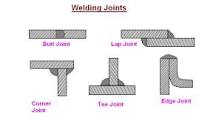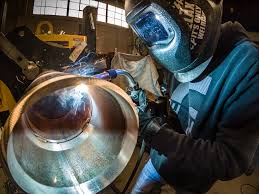Welding is the process by which metals may be joined by heating them to a suitable temperature with or without the application of pressure and with or without the use of filler metal.It has two types welding one is Autogenous welding and another is Heterogeneous welding The filler metal either has a melting point approximately the same as that of the work piece metal or little lower but about 430°C.

Autogenous welding
(1) It is the process of joining similar metals with the help of filler rod of the same parent metal.
(2) The weld strength is very high.
(3) The welding defects are less.
(4) More skill is required.
(5) This is more costly process.(6) It is more time consuming.
(1) It is the process of joining similar metals by the application of heat and pressure.
(2) The weld strength is moderate.
(4) Comparatively less skill is required
(5) This is moderately costly process.
(6) It is moderate time consuming
Heterogeneous welding
(1) It is the process of joining dissimilar metals using a filler rod.
(2) The weld strength is less.
(3) The welding defects are more.
(4) Comparatively less skill is required.
(5) This is not so costly process.
(6) It is less time consuming.
“Weldability” is defined as the “Capability of welding the specific process, for giving “inseparable firm joints” hav specified properties such as “define weld strength”, “weld quality”.
The factors governing the weldability are:
(1) Melting point of parent metal (Base metal) (2) Thermal conductivity.
(3) Thermal expansion
(4) Surface conditions (Cleaning the surface making it free from grease/oil / dirt/ dust etc.
(5) Metallurgical characteristics such as “Composition of metal” and “microstructure”.





